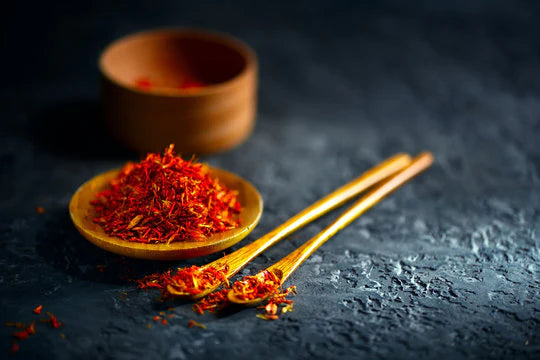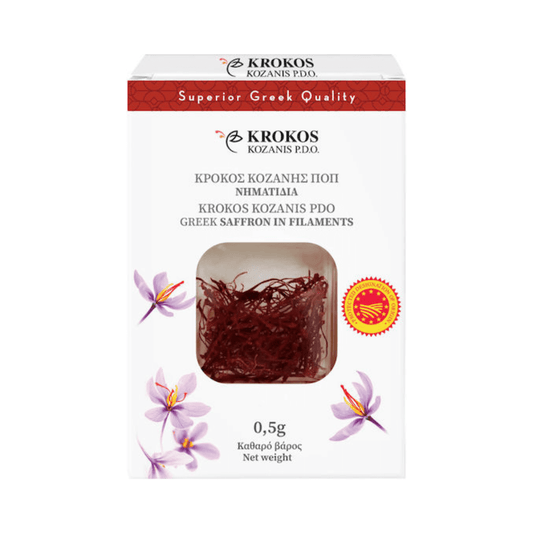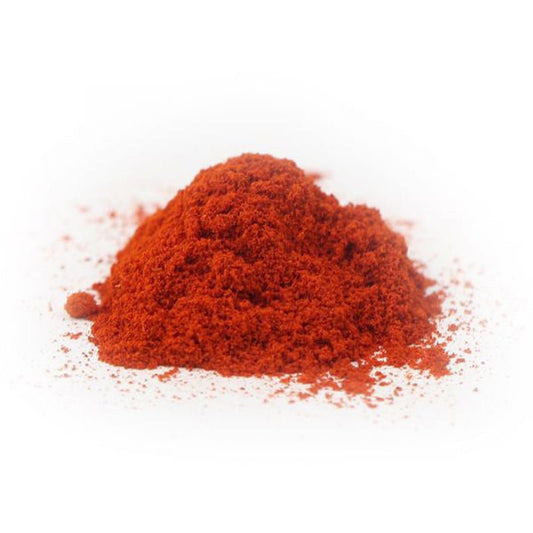
Crocus, or saffron, is derived from the stamens of the flower of saffron, Crocus sativus. Commonly known as the saffron crocus, it has been famous since ancient times for its deep red color, intense aroma, flavor, medicinal, and aphrodisiac properties. It is the most expensive spice in the world, due to the demanding and manual process of collecting and processing the plant.
Kozani crocus, the red gold of Greek soil, belongs to the best quality saffron in the world. Saffron, which is intended for many uses, is harvested, dried, and packaged according to ancestral know-how. The Protected Designation of Origin (PDO) guarantees that all stages of the production, processing, and preparation process take place in the region concerned.
The myth of the crocus
Crocus, according to Greek mythology, was a friend of the god Hermes (son of Zeus, messenger of the gods, and god of commerce). One day, while Hermes was practicing the discus throw, he accidentally hit his mortal friend Crocus on the head and fatally injured him.
As Crocus fell dead, Hermes decided to grant him immortality by transforming his friend's lifeless body into a beautiful purple flower and his blood into three red spots in the heart of the flower.
A little history of saffron...

The word "crocus," in the sense of the plant, the flower of the pigment, myrrh or even the herb / medicine, is known to us from the very first texts in the world. The history of the crocus begins in the East. Reports of the use of this plant can be found in Asia Minor as well as ancient Egypt.
Cleopatra used the crocus in her cosmetics, while the ancient Phoenicians used it in their offerings to the goddess Astarte. The use of crocus is also found in Minoan and Classical Greece, where it was used as a perfume and dye. Murals showing crocus flowers can be found in the excavations of Minoan palaces. A fresco dating from 1600 BC. J-C shows a young woman picking saffron, which testifies to the importance that this culture already had at the time.
Homer mentions saffron in his texts, comparing its color to that of the rising sun, while there are references to it in the Old Testament. Hippocrates, Asclepius, Dioscorides, Galen, and other ancient physicians used the word "saffron" in the sense of medicine or medicinal herb, as they recommended it as an analgesic, antipyretic, hypnotic, and aphrodisiac.
What is the origin of the crocus?

Crocus, as a pigment, medical advice, herb, or condiment, was known both in ancient Greece and other ancient peoples. However, opinions differ on the origin and culture of the plant.
Some claim that the crocus is a plant native to the East, where it was first cultivated. From there, it was transported to Europe by the Crusaders in the 13th century AD. J.-C century.
Others believe it originated in Greece, where it was first cultivated during the Middle Minoan period. This view is enhanced by a period fresco found in the palaces of Knossos in Crete, which depicts a young man or woman, according to others, a great ape, picking crocus flowers from a box.
Others even argue that the Greeks were engaged in the cultivation of saffron both in Macedonian and Byzantine times. The prevailing opinion is that the Arabs, after systematizing its cultivation and using it not only as a spice but mainly as a medicine, introduced it to Spain in the 10th century, from where it spread to other countries. Europeans.
However, the current cultivation of saffron in Greece (Kozani region) was introduced from Austria during the 17th century. More precisely, it was transported by merchants from Kozani, who at that time had close trade relations with Austria.
Where and how is Greek saffron produced?

Greek saffron comes exclusively from the Kozani region. The cultivation of saffron dates back to the 17th century in this region, which benefits from ideal conditions, with a warm and temperate climate and drained and moderately fertile soils. Combined with the specialist knowledge of growing and harvesting the plant, the result is a product of exceptional quality.
The flowering period of the crocus begins in mid-October and lasts 20 to 25 days. Saffron flowers are harvested by hand from sunrise to sunset and delicately placed in aprons or baskets. The most important and difficult part is drying, which requires special care and skill. If this is not done correctly, the quality and special characteristics of the product may change.
Once all these checks have been carried out, the saffron is packaged. Greek saffron is sold in two forms, either as dried red pistils or as a powder, resulting from the grinding of its red threads. Discover authentic Greek saffron.
The use of Greek saffron

Saffron is mainly used in cooking in small quantities due to its bitter and intense taste and its distinctive aroma, which gives it a bright yellow color. For example, it is often used to flavor rice that accompanies fish or chicken in fish soup or risotto. It can also be used in confectionery, but also alone in herbal tea. Here at Greek Flavours, you will find a wide variety of herbal teas made from Greek saffron in different flavors.
Due to its particularly strong coloring power, saffron extract is also used in paints and dyes for fabrics. Finally, due to its healing properties, the yolk is used in the composition of cosmetics and medicines.





